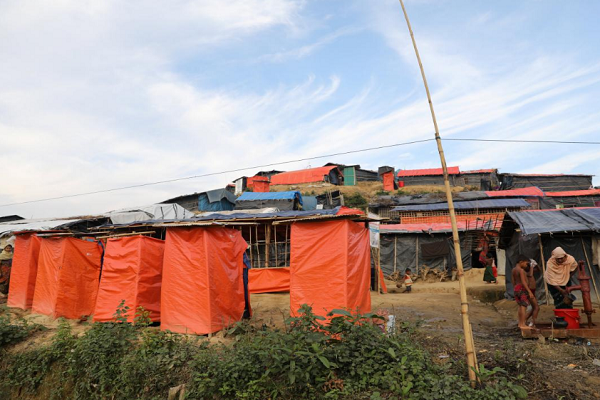Risks Grow for Rohingya Muslim Refugees in Bangladesh's Teeming, Squalid Camps

About 625,000 Rohingya Muslims have fled to sanctuary in Bangladesh from violence, looting and destruction in neighboring Myanmar after government forces launched a crackdown on Muslims on Aug. 25.
The swift exodus has taken the Rohingya refugee population to 837,000, making Bangladesh one of the world’s largest, most crowded settlement of asylum-seekers.
More than 60 percent of the water supply in the camps is contaminated with bacteria as temporary latrines overflow into hastily-built, shallow wells, a World Health Organization survey showed.
“There is a high risk of a public health event, not just cholera and acute watery diarrhea,” said Naim Talukder of the group Action Against Hunger, who is coordinating the efforts of 31 groups and agencies to manage water, sanitation and hygiene.
Most refugees live in flimsy bamboo and canvas shelters in an area crowded well beyond emergency standards, said Graham Eastmond, an official of the International Organization for Migration (IOM), according to Reuters.
“You are talking a third of the international standard,” he said. “We need to decongest urgently and obviously, to do that, we need more land.”
The IOM is among the bodies that have urged Bangladesh to free up more land and allow a wider spread of settlements.
“The government already allocated 3,000 acres of land for the Rohingya,” said Shah Kamal, a disaster management official. That figure is equivalent to 1,214 hectares.
“Considering the current situation, the government is planning to allocate 500 acres more land for them,” he added.
Last week, Bangladesh approved a $280-million project to develop an isolated and flood-prone island in the Bay of Bengal to temporarily house 100,000 Rohingya, despite criticism from rights groups.
The overcrowding spells health and safety risks, Eastmond added, from rapidly spreading water-borne and communicable diseases to landslides and flooding, besides swelling the threat to vulnerable children and women.
Single women or children head about a fifth of households, preliminary findings of a population survey by the UN refugee agency and Bangladesh show.
By Nov. 11, there were 36,096 cases of acute watery diarrhea since Aug. 25, as infection rates climbed, the UN children’s agency said last month.
Bangladesh, in partnership with UN agencies and charities, has spent hundreds of millions of dollars in responding to the crisis.
New roads built by the army will open this month, boosting access for camp-dwellers, said Eastmond.
Yet just 23 percent of funding needs for water, sanitation and hygiene services are being met, Talukder said.
Bangladesh and Myanmar vowed to begin the voluntary return of the Rohingya to Myanmar in the next two months.
But the Rohingya will have to present identity documents in order to be accepted, said Myint Kyaing, a Myanmar labor and immigration ministry official.
Relief officials fear that few Rohingya, a stateless and long-persecuted minority in Myanmar, carried such documents in their desperate scramble to leave.
Hundreds of Rohingya villages have been razed, their land given to others and their crops harvested.
 Most Commented
Most Commented 


